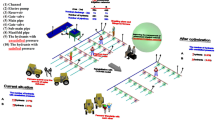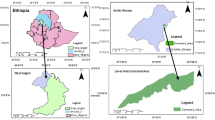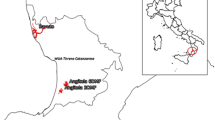Abstract
A method is presented to analyse the impact of the selection of irrigation gates on operational performance of the Sungai Muda Irrigation Scheme in Malayisa. The method examines the discharge capacity of the water control gates at all levels in order to compare the specific water supply (the ratio of supply to command area) with the specific water demand which is the required hydromodule. The term hydromodule is the reciprocal of “water duty” and thus has units of litres/second/hectare. The greater the deviation between the two, the greater the potential loss of control during the operation of the scheme. The method is relatively simple but is more complex in this particular example as two hydromodules are used for the irrigation of basin rice; one for the presaturation period and one for the normal supply period. The most common cause of loss of water control is found to be provision of oversized turnout gates at the head of secondary and tertiary canals. Such design approximations enable more water to be used in those command areas thus leading to waste and to shortage of water in other areas. It is suggested that during design and rehabilitation of irrigation schemes, the operational implications of design approximations should be examined more carefully.
Similar content being viewed by others
References
Clark W.M., Bramley M.E. & Thorp R.F. 1982. Water requirements for flooded rice cultivation.Proc Instn. Civil Engineers, Part 2 (pp 769–788).
Horst L. 1983. Irrigation systems — alternative design concepts. Network Paper 7c. ODI Irrigation Management Network.
Horst L. 1990. Interactions between technical infrastructure and management. Network Paper 90/3b. ODI/IIMI Irrigation Management Network.
Jurriens R. 1980. Irrigation design and operation — some thoughts for discussion. Internal Memorandum IILRI, Wageningen, The Netherlands.
Jurriens R. et al. 1984. Evaluation of irrigation design: a debate. Network Paper 9b. ODI Irrigation Management Network.
Lankford B.A. 1992. The use of measured water control in furrow irrigation management — a case study in Swaziland.Irrigation and Drainage Systems 6: 113–128.
Lankford B.A. 1992. A systems approach to water control at the Sungai Muda irrigation scheme, Pinang, Malaysia. MSc Dissertation, The University, Newcastle Upon Tyne, UK.
Murray-Rust D.H. & Snellen W.B. 1993.Irrigation System Performance Assessment and Diagnosis, International Irrigation Management Institute, Sri Lanka.
Plusquellec H., Burt C. & Wolter H.W. 1994. Modern water control in irrigation: concepts, issues, and applications. World Bank Technical Paper No. 246. Irrigation and Drainage Series. World Bank, Washington DC, USA.
Weaving R. 1991. Rice irrigation in Malaysia; economic change and the choice of irrigation technology. Operation Evaluation Department Precis, No. 16, (October). World Bank, Washington DC, USA.
Author information
Authors and Affiliations
Rights and permissions
About this article
Cite this article
Lankford, B., Gowing, J. The impact of design approximations on the operational performance of an irrigation scheme. Irrig Drainage Syst 10, 193–205 (1996). https://doi.org/10.1007/BF01102806
Accepted:
Issue Date:
DOI: https://doi.org/10.1007/BF01102806




